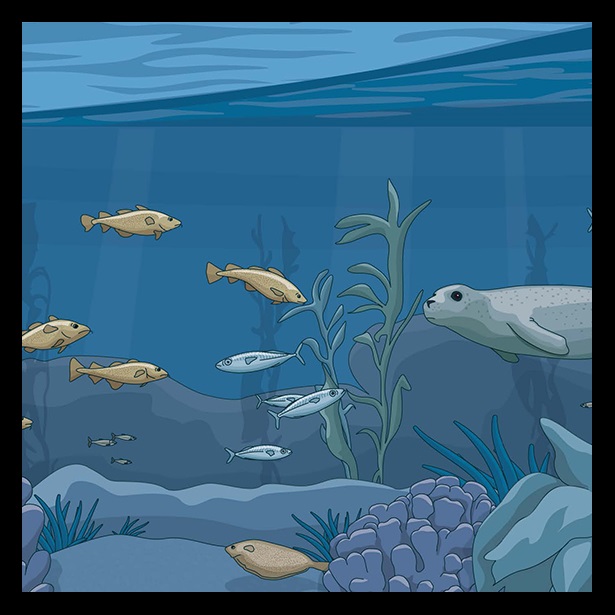Progress and Delays Mark EU’s Efforts to End Overfishing
With deadline approaching, 2018 could be decisive in quest to achieve sustainability

Whiting (Merlangius merlangus), small fish related to cod, are kept in the hold of a trawler while waiting to be landed. Recent progress in the EU to bring catch limits in line with scientific advice gives cause for hope with the 2020 deadline to end overfishing fast approaching.
Monty Rakusen/Getty ImagesAt our recent Pew conference, European Union Commissioner for Environment, Maritime Affairs, and Fisheries Karmenu Vella made a powerful case for the benefits of sustainable fisheries. In his closing speech, he emphasised that “ending overfishing makes environmental, social, and even economic sense,” and concluded that, “the question is not whether we can afford to act [but] how can we afford not to act.”
This urgency is welcome and should inform the European Commission’s stance as it begins preparing to propose next year’s fishing limits—a process that is kicked off by the publication of the Commission’s “Communication” on fishing opportunities each summer. As we noted in a February analysis, Fisheries Council ministers, in setting 2018 limits, made significant progress toward following the advice of scientists. For the first time since the Common Fisheries Policy (CFP) reform in 2013, the council set the majority of limits in line with scientific advice, after marathon negotiations over two days and two nights that saw Commissioner Vella reminding ministers of their commitments in the CFP.
Despite this progress, the Council set 44 percent of limits for 2018 higher than the published scientific advice, and provided little new information to justify why it did that. The Commission, in its latest report on the implementation of the CFP, also noted that overfishing persists. For 2016, the latest year covered by that report, at least 41 percent of stocks were fished at too high a level. With only two years remaining before the CFP’s 2020 deadline to end overfishing in EU waters, plenty of work remains for fisheries ministers.
Still, the accelerating progress in decision-making gives cause for optimism. As Commissioner Vella said, fisheries ministers, who have the power to end overfishing, increasingly understand the overwhelming case for doing so. So will it be clear sailing from here?
That remains to be seen. We are in a pivotal year for EU fisheries management: Commissioner Vella will participate in decisions on fishing limits for a final time before the end of his mandate; the November Fisheries Council meeting will set the fishing limits for deep-sea stocks for 2019 and for the deadline year of 2020; and EU legislators must adopt the final measures for implementing the landing obligation under the CFP.
A recent report shows a great deal of variation across regions moving towards sustainable fisheries. Overfishing in the Mediterranean Sea for example is massively more severe than in the northeast Atlantic Ocean. In northern Europe, some areas are doing better than others in sticking to the advice of scientists when setting catch limits. We hope decisions made in 2018 will reduce this disparity and bring all EU fisheries management in line with scientific advice.
Region-specific multi-annual plans are intended to ensure that each area meets the CFP’s requirements. However, the plans agreed so far for the Baltic and North seas, and the Commission’s latest proposal for the western waters, fall short of this ambition with cut-and-paste objectives that, in many cases, allow fishing above the legal limits, preventing the CFP’s objectives from being achieved. These plans also risk causing confusion among scientists because policymakers are simultaneously asking scientific bodies to measure progress against one benchmark and seeking advice on catch limits against another.
This systemic watering down of the ambition of the 2013 reforms is worrying and makes it even more important that decision makers show transparency this year in how their decisions—coupled with the scientific advice—will help achieve EU policy objectives. The urgent case for ending overfishing is coming into sharper focus than ever before, and this year’s decisions could make or break the EU’s chances of meeting the 2020 deadline. We will be keeping a close eye on the outcomes of October, November, and December Fisheries Council meetings, and urge ministers to follow the science so the EU can soon reap the environmental, social, and economic rewards of ending overfishing.
Andrew Clayton directs The Pew Charitable Trusts’ efforts to end overfishing in North-Western Europe.


Countdown to 2020: How Far Has the EU Come in Ending Overfishing?
How far has the EU come in ending overfishing?


EU Needs Swift Progress to End Overfishing by 2020 Deadline
Report shows many stocks still not being fished at sustainable levels


10 Reasons to End Overfishing in Europe
Taking action would benefit the marine environment, as well as EU citizens and fishermen







